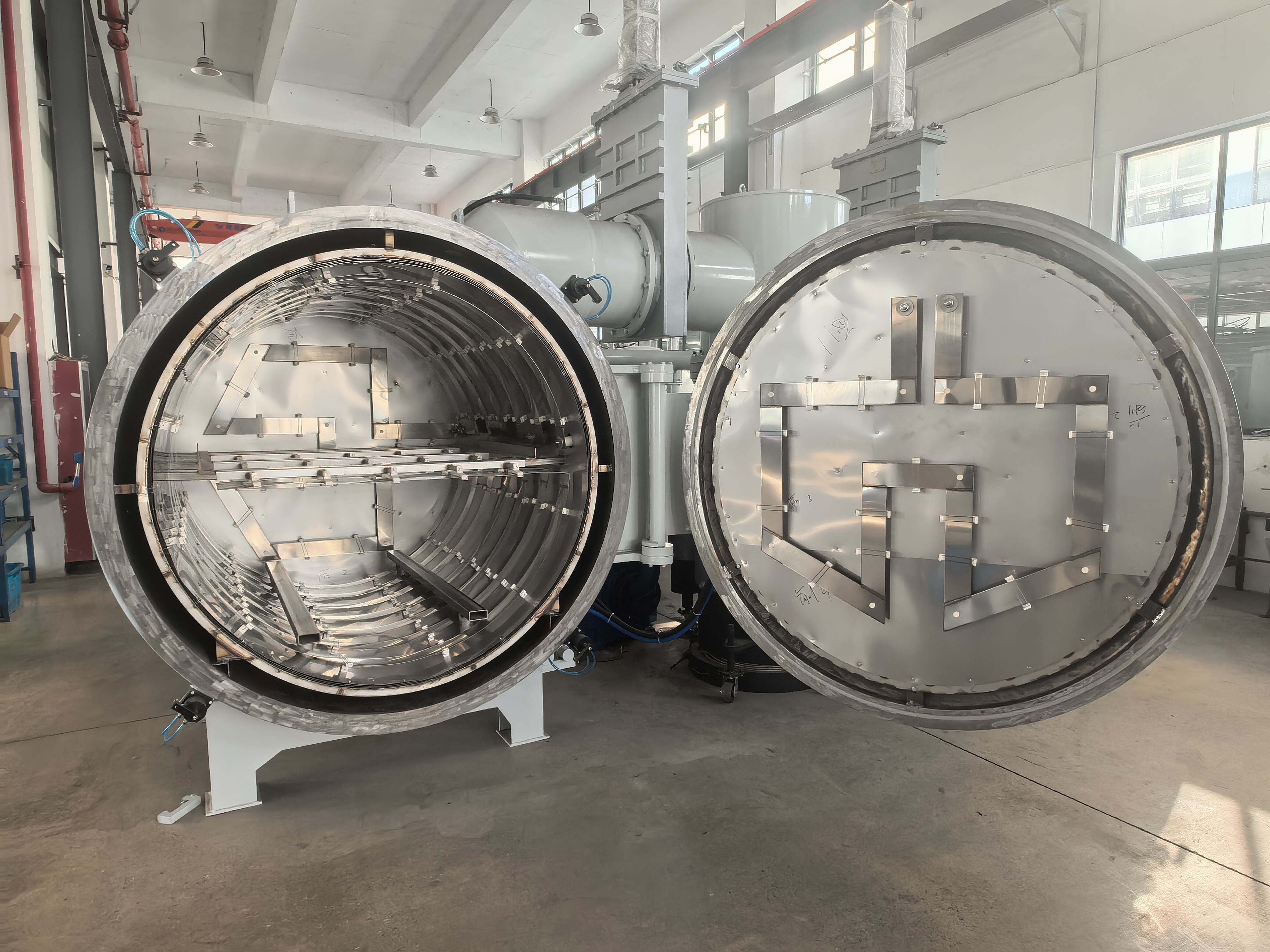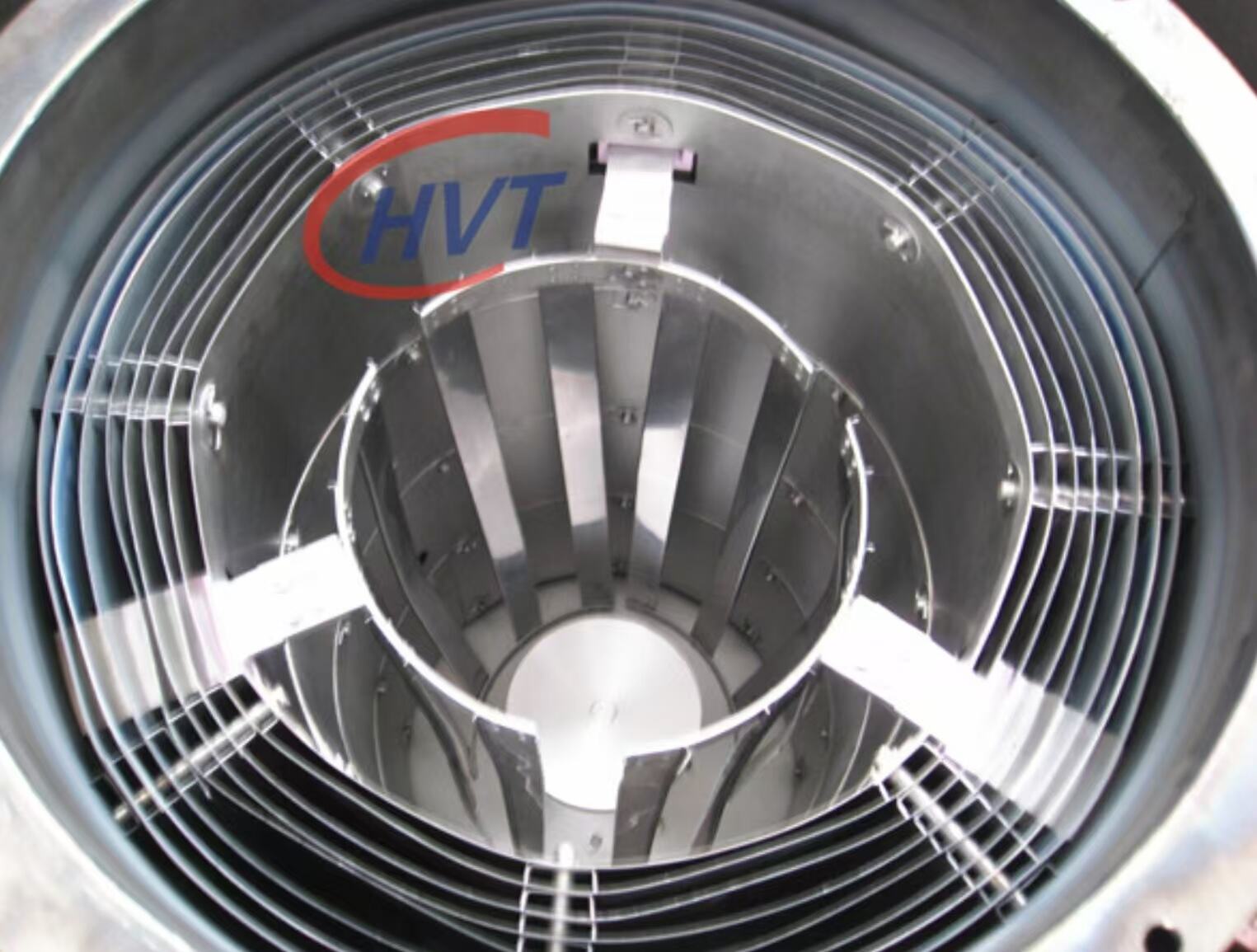Mitä ovat Lämmityskammiot ? Ydintoiminnot ja lämpötilakyvynnet
Lämpötilakameroista: Rakenne ja tarkoitus
Suljetut tilat, jotka on sopeutettu materiaalien lämpötilan nostamiseen, kutsutaan lämmityskamaroiksi. Tällaiset kamarat sisältävät yleensä ohjausjärjestelmät, joilla voidaan säätää lämpötilaa niin, että voidaan tarjota asetetut termaliset olosuhteet. Kamarien rungot tehdään usein lämpökestävistä materiaaleista, kuten metallista tai keramiikasta. Näin ollen niiden toiminta on paljon tehokkaampaa ja kestävämpää. Lämmityskamareja löytyy monia erilaisia, jotka palvelevat eri tarkoituksia. Niihin kuuluvat esimerkiksi vakuumiuunien, mufflepystyt ja muut kokeelliset suunnitelmat, jotka palvelevat monipuolisia teollisia tai tieteellisiä tarkoituksia. Nämä erilaiset tyypit osoittavat laajaa käyttöluokkaa, johon lämmityskamaret sovelletaan, alkaen peruslämmitysohjelmista ja päättyen raskaisiin teollisiin prosesseihin.
Päätoiminnot: Lämpöjakauma ja lämpötilan säätö
Lämpötilan tasainen jakautuminen on yksi lämmityskamarioiden päätehtävistä. Tämä homogeenisuus on tärkeää välttääkseen lämpötilaeroja, jotka johtavat materiaalin ominaisuuksien heikkenemiseen. Kehittyneet lämpötilavalvontajärjestelmät voivat sisältää palautussyklejä, jotka mahdollistavat reaaliaikaiset säädökset täsmän ylläpitämiseksi. Nämä ominaisuudet ovat erittäin tärkeitä, erityisesti kun otetaan huomioon, että kamarioiden täytyy joskus toimia korkeilla lämpötiloilla (satoja celsiusasteita) ja jopa yli 1000°C tietyissä sovelluksissa – mikä korostaa tarvetta vahvaan ja luotettavaan lämpöregulaatiojärjestelmään sekä turvallisuuden varmistamiseksi että lämpötilan toimituksen tehokkuuden kannalta. Tämä monipuolisuus selittää, miksi lämmityskamariot ovat välttämättömiä monissa teollisuudenaloissa, mukaan lukien valmistusteollisuus ja tutkimus.
Lämmityskameroitten teollinen käyttö
Ilmailu: Korkealämpötilaisen materiaalinkäsittelyn
Kaasugeneraattorien sisääntulot pelaavat avainta roolia ilmailualassa, erityisesti edistetysten leluitten ja kompositiematrialien valmistuksessa ja tuotannossa. Nämä huoneet tarjoavat lämpötilaprofiilin hallinnan, joka on välttämätön mekaanisten ominaisuuksien ja turvallisuusmarginaalien optimointiin, jotka ovat olennaisia lennetyöskentelyyn. Uudet sovellukset ovat asettaneet niiden kyvyt katuesityksiin, mikä on johtanut ilmailusovellusten todistamiseen. Samoin kuin samojen lämpötilaehtoja tarjoamalla, lämmityshuoneet mahdollistavat materiaalien kehittämisen, jotka pystyvät vastaamaan avaruuden ja ankarien ympäristöehdot.
Autoteollisuus: Akkujen lämpötilanhallinta ja kuuma käsittely
Hydraulinen tuote kuukaudessa: Autoteollisuuden lämpökameroissa on keskeistä, erityisesti sähköauton akujärjestelmien termolisäysjohtamisessa ja osien lämpökuormituksessa. Tehokas termolisäysjohtaminen parantaa myös akujärjestelmien eliniän ja suorituskykyä, ja autokomponenttien kestovuus ja toimintakyky paranee lämpökuormituksen avulla. Lämpökuormitustekniikoiden valinta perustui autoteollisuuden insinöörinkokeiluihin ja osoittaa ne tehokkaaksi keinoksi parantaa ajoneuvon tehokkuutta ja sen eri osien eliniäytä. Nämä menettelyt vievät autot käsitteestä korkealuontaisiin luotettavuuteen ja ovat olennaisia autoteollisuuden teknologian kehitykselle.
Laboratorio- ja tutkimussovellukset
Materiaalitiede: Testaaminen termisiä ominaisuuksia
Laboratoriotulilaitteet ovat tärkeitä uusien materiaalien termisten ominaisuuksien analyysiprosessissa. Huoneet käytetään testaamaan materiaaleja eri olosuhteissa, kuten määrittämään, kuinka tehokkaasti lämpö on johtuvia ja kuinka materiaalit laajenevat ja supistuvat eri lämpötiloissa. Käytettäessä niitä materiaalitieteessä, näiden tulilaittojen tarkkuus mahdollistaa testauksen ja analyysin, joka julkaistaan usein vertaisarvioituissa tieteellisissä lehdissä. Tämä tarkkuus vaikuttaa tilastollisen todisteaineiston luotettavuuteen termisistä ominaisuuksista, mikä tukee tutkimusten tuloksia.
Termianalyysi korkeassa lämpövirtasuunnassa
Tarkka data on välttämätöntä alueilla kuten uusiutuva energia, mikä tarkoittaa, että erityistarkoituksessa käytettävät lämmityskameroita tarvitaan korkeiden lämpövirtaesitysten termianalyysiin. Tämä on tärkeä ominaisuus kalorimetrian ja muiden termitoimintojen suorittamiseen, jotka kopiointa äärimmäisiä ympäristöjä. Lämpityskamerat, jotka pystyvät reprodukoimaan nämä olosuhteet, mahdollistavat tutkijoille ennustavaa mallintamista ja kokeellista validointia tutkimus- ja kehitystyön (R&D) aikana. Useat akateemiset työt ovat korostaneet näiden lähestymistapojen tehokkuutta ja niiden merkitystä kestävien energiatekniikoiden kehittämisessä.
Mukautetut kokeelliset asetelmat R&D:ssä
Lämpökamereet tarjoavat tutkijoille suuren joustavuuden mukauttaakseen kokeen tiettyihin tutkimustarpeisiin. Tämä joustavuus mahdollistaa tutkijoiden replikoimisen realistisempia skenaarioita suuremmalla uskottavuudella, mikä johtaa relevanttimpiin tutkimustuloksiin. Kysely R&D-ammatilaisiin osoitti, että mittauskohteet ovat kasvussa yhteistyötutkimushankkeissa. Tätä kehitystä nähdään vastauksena kasvavaan kysyntään mukautetuista järjestelmistä, jotka tukevat sekä tutkimuksen etenemistä että tuloksia useilla aloilla.

Edut optimoinnista Lämmityskammio Käyttö
Energiatehokkuus monikamerajärjestelmissä
Tulot: Esimerkkinsä lämpötilakamerat parantavat energian tehokkuutta, erityisesti kun niitä käytetään useissa kamarereissä, tarjoamalla merkittävästi alhaisempia toimintakustannuksia. Älykkäiden ohjausjärjestelmien ja isolointitekniikoiden lisäämisen avulla nämä konfiguraatiot kuluttavat 30 % vähemmän energiaa kuin perinteiset lämmitysjärjestelmät. Tämä on vahvistettu suorituskykytarkasteluista johdetuilla tiedoilla, jotka osoittavat korkean yhteenkuuluvuuden toteutettujen optimoitujen järjestelmien ja energiasäästöjen välillä. Tällaiset kehitykset johtavat ei ainoastaan alempiin energialaskuksiin, vaan ne ovat myös ympäristölle kestävämpää, koska ne vähentävät resurssien käyttöä.
Tarkkuus ja isotermaalisuus parempia tuloksia varten
Isothermaalisuuden hallinta WF-laseria varten tehdään käyttämällä modernia lämpökameroita, jotka tarjoavat tarkkuutta. Isothermaalisuus ylläpitää tasaisia kamerojen lämpötiloja, mikä on olennaista lämpöherkkien näytteiden suhteen. Useat tapaustutkimukset ovat korostaneet tarkkuuden merkitystä laboratoriossa, joka mahdollistaa toistuvat ja luotettavat tulokset. Tasaisella ja yhtenäisellä lämpötilalla tutkijat ja valmistelijat voivat huomattavasti parantaa yleistä laatua ja luotettavuutta heidän tuloksissaan, mikä lisää niiden uskottavuutta ja hyödyllisyyttä.
Kustannussäästöt parantuneen lämpöjakauman kautta
Tehokas ja tehokkainen lämpöjakauma lämmityskameroissa säästää enemmän kuin vain prosessiaikaa; se johtaa parempaan materiaalien hyödyntämiseen ja vähentää uudelleenkäsittelyä. Tutkimukset osoittavat, että parantunut lämpöjakauma voi johtaa havaittavaan vianmäärän laskuun, mikä luonnollisesti kääntyy alempiin tuotantokustannuksiin. Avainhenkilöt ovat antaneet todistuksia siitä, että he ovat nähneet suuren leikkauksen kulujen tai maksujen osalta käyttäessään huippulämpötekniikkaa. Ja vähentämällä jätteen ja uudelleenkäsittelyn määriä yritykset voivat alentaa kustannuksiaan, työskennellä tehokkaammin ja tuottaa parempaa laatua olevia tuotteita.
Johtopäätös: Yhdenmukaisuus Lämmityskammio Tyypit sovellustarpeisiin
Avainvalintacriteria: Lämpötila, tila ja materiaali
Oikean lammityskameroon valitseminen vaatii ajankäyttöä, kun otetaan huomioon lämpötila, koko ja materiaalien tyypit. Tarpeellinen lämpötilavariointi sovelluksesi kannalta on tärkeää, koska se voi vaihdella kameroittain tarkkuuden ja ohjauksen osalta. Lisäksi tilavarausten rajoitteet ovat toinen vaikuttava tekijä; kameroon koko ja saatavilla oleva työtila voivat vaikuttaa tehokkuuteen laboratorioissa ja töissä. Lopuksi: Päätöksessä asioiden kvaliteetti todellisissa kameroissa vaikuttaa turvallisuuteen ja tehokkuuteen, ja joskus sinun täytyy tehdä omia tutkimuksia tai konsultoida asiantuntijaa varmistaaksesi korkean suorituskyvyn ilman potentiaalista vahingoa/toteuma-aikuista.
Tulevaisuuden suuntauksia: Ultrapienet suunnitelmat ja älykäs hallinta
Ajantuen kehityksen myötä lämpökammioonikin kehittyy, ja seuraavat suuntaviivat ovat harkintaa arvoisia, kuten 1. Superankka design 2. Älykäs ohjaus. Nämä superankkat designs ratkaisevat tilan rajoituksia, koska ne käytetään vapauttamaan ylimääräistä tilaa laboratoriossa, leikkipuiston tai sairaalan sekä teollisuuden työpöydissä samalla kun parantavat tuottavuutta. Lisäksi älykkään IoT (Internet of Things) -perustuvien ohjaussysteemien käyttöön ottaminen parantaa lämmityspalveluiden tehokkuutta ja käyttökokemusta etävalvonnasta ja -ohjauksesta sekä lisätyn tarkkuuden avulla. Nämä innovaatiot johtavat alaa tulevaisuudessa markkinatutkimusten mukaan, johtuen kasvavista kestävyyden vaatimuksista ja vähemmän energian tarpeesta, ja sen seurauksena muuttuu tapaa, kuinka lämpökammeja kuvitellaan ja käytetään eri segmenteissä.
UKK-osio
Mitä materiaaleja käytetään yleensä lämpökamarien rakentamiseen?
Lämpötilakammereita rakennetaan yleensä sellaisten materiaalien, kuten metalleja ja keramiikkaa, käyttämällä, jotka kestää korkeat lämpötilat, varmistaen kestävyyden ja tehokkuuden.
Miksi tasainen lämpöjakauma on tärkeää lämpötilakameroissa?
Tasainen lämpöjakauma on ratkaisevan tärkeää estääkseen lämpötilakerrosten, jotka voivat haitata materiaalien ominaisuuksia lämmitysprosesseissa.
Miten lämpötilakamerat hyödyttävät ilmailuala-altaa?
Lämpötilakamerat mahdollistavat tarkkan lämpötilan ohjaamisen, mikä parantaa korkean suorituskyvyn levyjen ja kompositioiden syntymistä ja prosessointia, joita käytetään ilmailusovelluksissa.
Mikä on lämpökamerojen rooli autoteollisuuden termodynaminen hallinnassa?
Lämpökameroilla on keskeinen asema sähköauton akkujen termodyynaamisen suorituskyvyn hallinnassa sekä autoteollisuuden komponenttien kestavuuden ja suorituskyvyn parantamisessa lämpökuojen avulla.
Kuinka moderneja lämpökameroja käytetään energiatehokkuuden parantamiseen?
Modernit lämpökamerot sisältävät edistyneitä ohjausjärjestelmiä ja isolointiteknoalogiaa, mikä vähentää energiakulutusta 30 prosenttia verrattuna perinteisiin lämmitysmenetelmiin.
Sisällys
- Mitä ovat Lämmityskammiot ? Ydintoiminnot ja lämpötilakyvynnet
- Lämmityskameroitten teollinen käyttö
- Laboratorio- ja tutkimussovellukset
- Edut optimoinnista Lämmityskammio Käyttö
- Johtopäätös: Yhdenmukaisuus Lämmityskammio Tyypit sovellustarpeisiin
-
UKK-osio
- Mitä materiaaleja käytetään yleensä lämpökamarien rakentamiseen?
- Miksi tasainen lämpöjakauma on tärkeää lämpötilakameroissa?
- Miten lämpötilakamerat hyödyttävät ilmailuala-altaa?
- Mikä on lämpökamerojen rooli autoteollisuuden termodynaminen hallinnassa?
- Kuinka moderneja lämpökameroja käytetään energiatehokkuuden parantamiseen?


